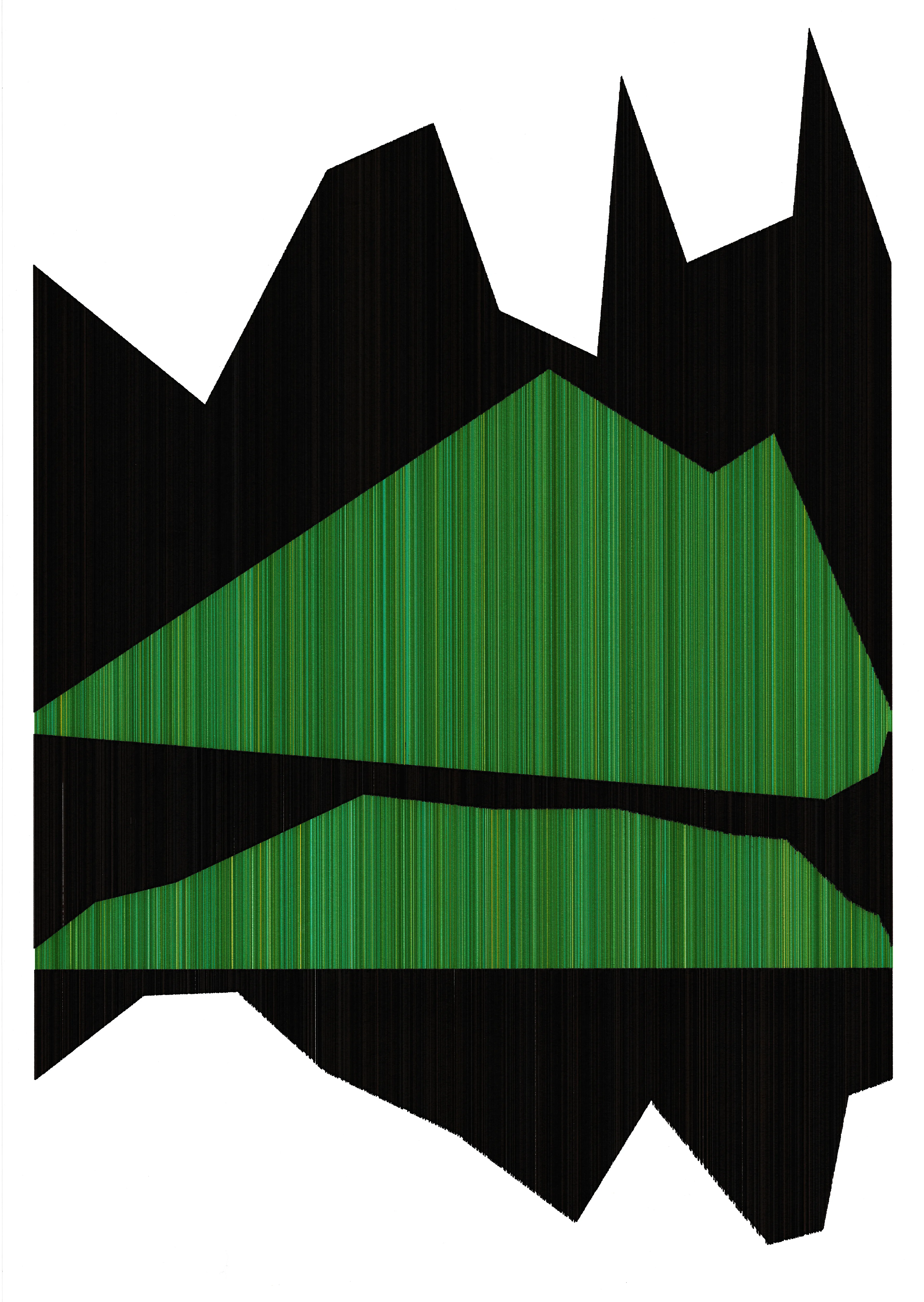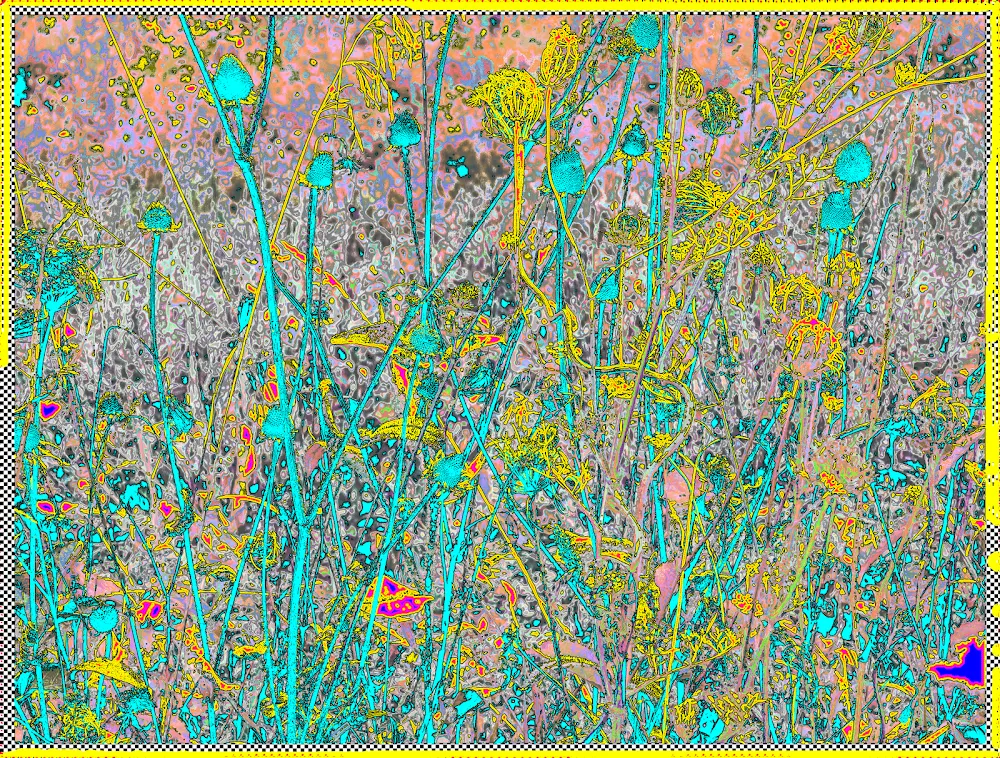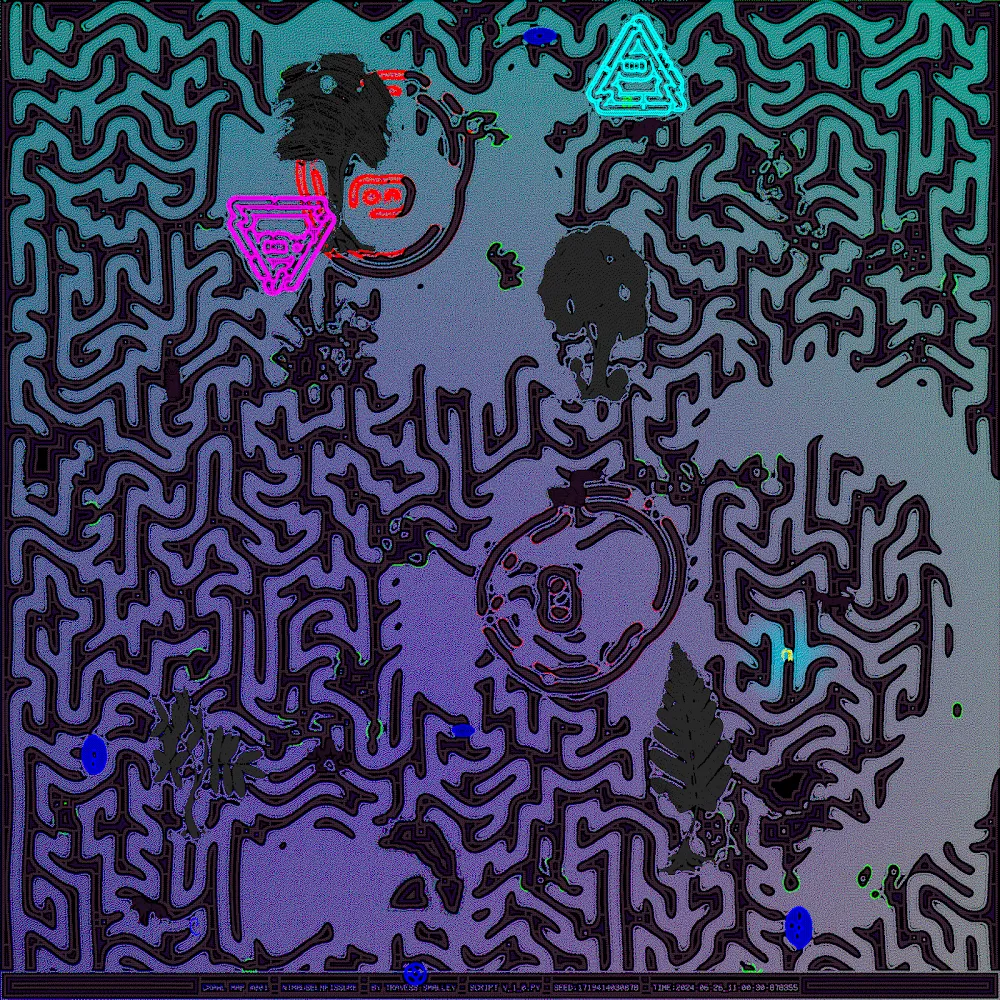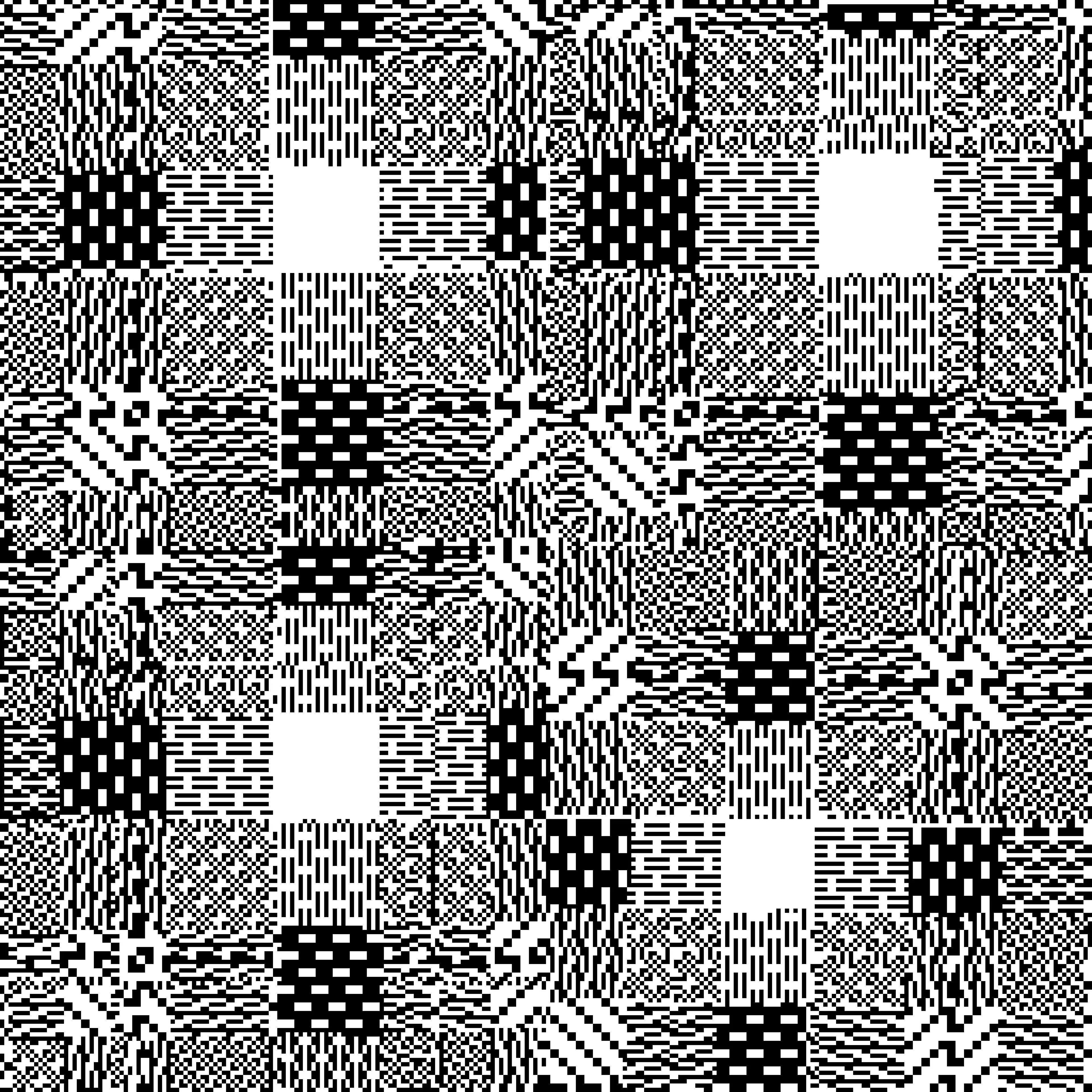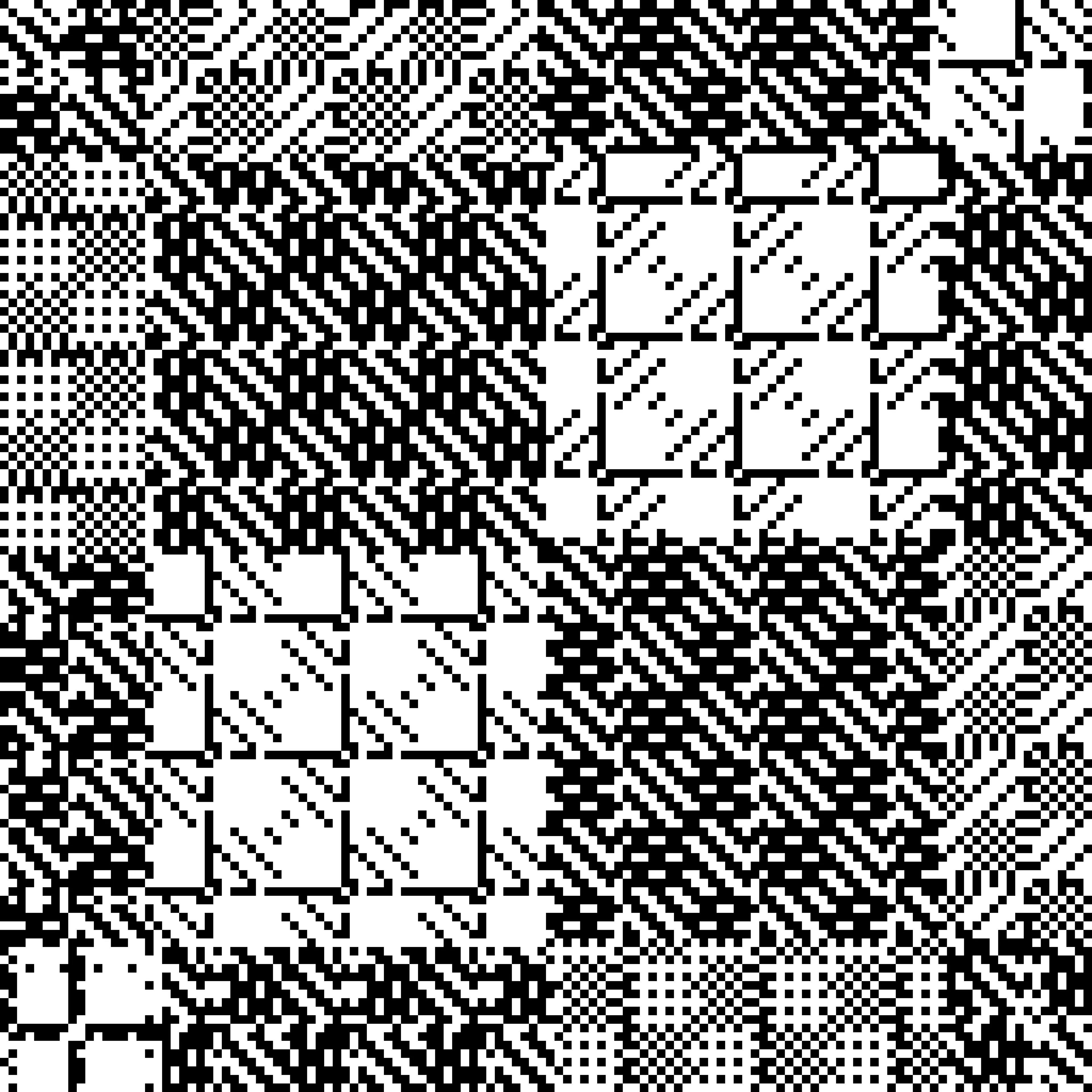Subscribe to get the latest on artists, exhibitions and more.
Pixel Rug: Interview with Travess Smalley

Travess Smalley in conversation with Mimi Nguyen.
Mimi Nguyen: Your practice counts generative art and design, creative software, digital painting, and printmaking. What fascinates me is the generative painting programming through which you create. It’s layers of various scripting, analog work, loops and iterations with scanning and printing. Can you talk us through this process?
Travess Smalley: I’m thinking about textile patterns, Appalachian quilting, knitting instruction, abstracted music notations, rogue-like dungeon maps, lace samplers, circuits, the grain of printed images, emergent forms of play, the ways we visualize large systems.
My workflow is intuitive, reflexive, gradual, and accumulating. Each work builds upon the last. Code is used, judgment is used, and sometimes I incorporate those judgments into the code.

Mimi Nguyen: Even after this whole process, you keep experimenting and working on the scripts. You’d generate hundreds of outputs, adjust and select the final works. When do you stop?




